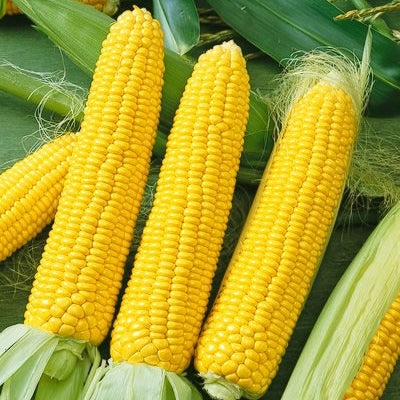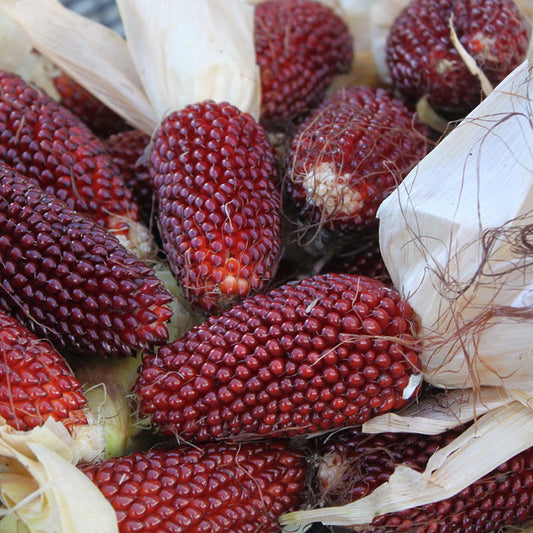-
main-collection-product-grid

Corn Seeds - NK 199
Dependable seven-inch golden ears grow on stalks up to eight feet tallCorn Seeds - NK 199
Dependable seven-inch golden ears grow on stalks up to eight feet tallRegular price As Low As $9.49Regular priceUnit price per -
main-collection-product-grid

Corn Seeds - Popcorn
Taste the freshness of homegrown popcornOut of StockCorn Seeds - Popcorn
Taste the freshness of homegrown popcornRegular price As Low As $11.59Regular priceUnit price per -
main-collection-product-grid

Corn Seeds (Organic) - Strawberry Popcorn
Ruby red kernels bring interest and magic to your gardenOut of StockCorn Seeds (Organic) - Strawberry Popcorn
Ruby red kernels bring interest and magic to your gardenRegular price $20.99Regular priceUnit price per
About our corn seeds
- 19 corn seed varieties
- Frost-free growing season is necessary to grow corn from seed
- Prefers full sun exposure
- Grow your own corn for superior flavor
Fresh homegrown corn has great history
As American as apple pie, corn has been grown in North America for thousands of years. Together with tomatoes, this popular seed has inspired more home gardens than any other vegetable. One bite into a fresh ear of corn will answer all your questions about why this homegrown vegetable is so popular.
A frost-free growing season is necessary to grow corn from seed. Corn is wind pollinated, so it must be planted in a block of several rows for even pollination, not just one scrawny row. For a typical home garden, choose one cultivar (to prevent cross-pollination) and plan on planting a minimum of 10 to 15 plants per person for fresh corn this season.
Ideal conditions for growing corn
Sow corn seeds two weeks after the last spring frost. Corn prefers highly fertile and well-drained soil with a temperature between 60 and 65°F. Be sure to choose a planting site with plenty of sunlight and where the soil is high in nitrogen and moisture. Soil should be amended prior to planting with aged manure or rich compost. Plant seeds about one to two inches deep with two to three seeds per hole. Plantings should be about 12 to 15 inches apart with rows 30 to 36 inches apart. Shorter varieties may be spaced closer.
Water after planting and keep soil consistently moist through germination and harvest. If more than one seed sprouts from a group, thin to the strongest plant. Use a fertilizer that is high in nitrogen when plants are approximately 12 to 18 inches tall. Be sure to pull weeds around plants if they appear; if weeds become excessive, a thick layer of mulch may be applied to the plant's base. After about three weeks the silk of the plant should be visible and fading to a brown color. When this happens, ears of corn are ready for harvest.
Harvesting and storing corn
To harvest your corn, bend and pull the ear downwards from the plant with a twisting motion. Consume or freeze immediately for best quality. If storing your corn, do not remove husks; it will last about one week in the refrigerator or up to eight months in the freezer.
For more information about planting, growing, and caring for corn seed, see the Corn Seeds Planting Guide.


